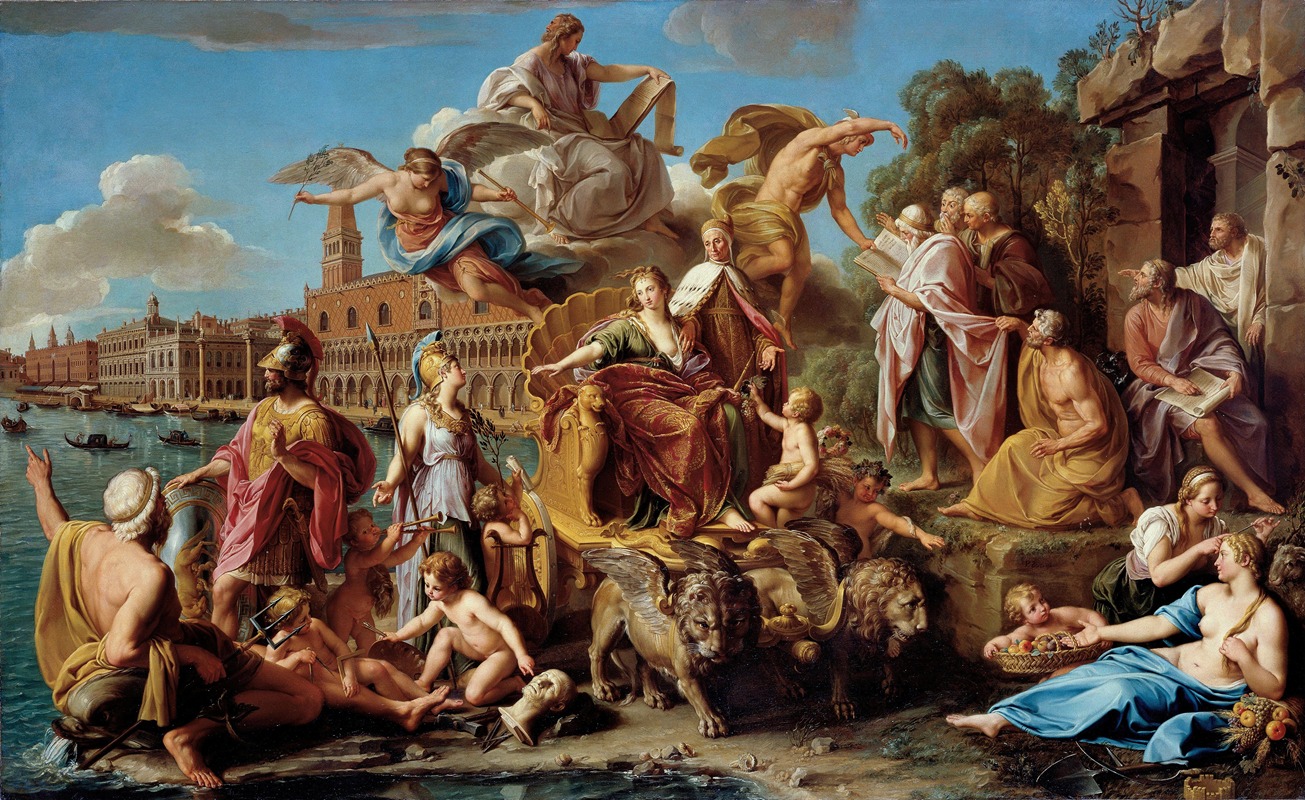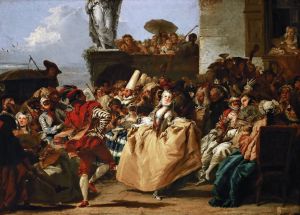
The Triumph Of Venice
A hand-painted replica of Pompeo Batoni’s masterpiece The Triumph Of Venice, meticulously crafted by professional artists to capture the true essence of the original. Each piece is created with museum-quality canvas and rare mineral pigments, carefully painted by experienced artists with delicate brushstrokes and rich, layered colors to perfectly recreate the texture of the original artwork. Unlike machine-printed reproductions, this hand-painted version brings the painting to life, infused with the artist’s emotions and skill in every stroke. Whether for personal collection or home decoration, it instantly elevates the artistic atmosphere of any space.
Pompeo Batoni's "The Triumph of Venice" is a notable work by the Italian painter, renowned for his skillful blending of classical themes with the vibrant style of the late Baroque period. Batoni, born in 1708 in Lucca, Italy, was a prominent figure in the 18th-century art scene, celebrated for his portraits and historical paintings. His works often reflect the grandeur and elegance of the era, and "The Triumph of Venice" is no exception.
"The Triumph of Venice" is an allegorical painting that captures the essence of Venice's power and influence during its height as a major maritime republic. Although specific details about the painting's commission and exact date of creation are not widely documented, it is consistent with Batoni's oeuvre, which frequently depicted grand historical and mythological subjects.
In the painting, Batoni employs a rich palette and dynamic composition to convey the splendor and authority of Venice. The central figure, often interpreted as the personification of Venice, is depicted in a triumphant pose, surrounded by allegorical figures that symbolize various virtues and aspects of the city's dominance. This personification is typically adorned with opulent garments and regalia, emphasizing the wealth and cultural significance of Venice during the period.
Batoni's technique in "The Triumph of Venice" showcases his mastery of detail and his ability to infuse classical elements with the lively and dramatic flair characteristic of the Baroque style. The use of light and shadow, along with the intricate detailing of fabrics and textures, highlights Batoni's technical prowess and his attention to the subtleties of human expression and movement.
The painting reflects the broader cultural and political context of 18th-century Europe, where Venice was celebrated not only for its economic power but also for its contributions to art and culture. As a center of trade and diplomacy, Venice held a unique position in the European landscape, and Batoni's work captures this duality of commercial success and artistic achievement.
While "The Triumph of Venice" is a testament to Batoni's artistic vision, it also serves as a historical document that offers insight into the values and aspirations of the Venetian Republic. The allegorical nature of the painting allows viewers to explore themes of power, virtue, and the enduring legacy of one of history's most influential city-states.
Batoni's legacy as an artist is marked by his ability to convey complex narratives through his paintings, and "The Triumph of Venice" is a prime example of his skill in this regard. The painting remains a significant piece within Batoni's body of work, illustrating his contribution to the artistic heritage of the 18th century and his role in shaping the visual culture of his time.
Overall, "The Triumph of Venice" by Pompeo Batoni is a celebration of Venice's historical grandeur, rendered with the technical brilliance and imaginative depth that define Batoni's artistic legacy.

















